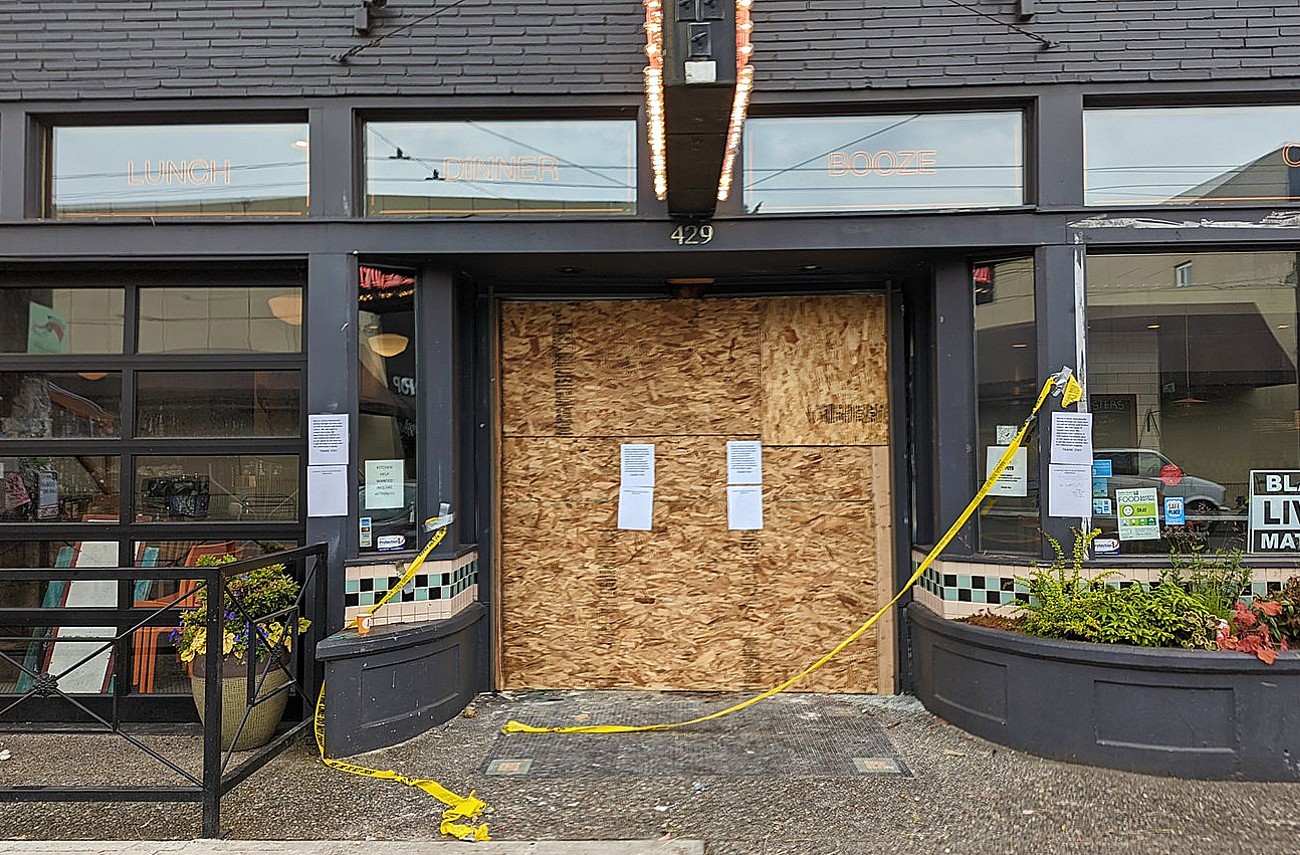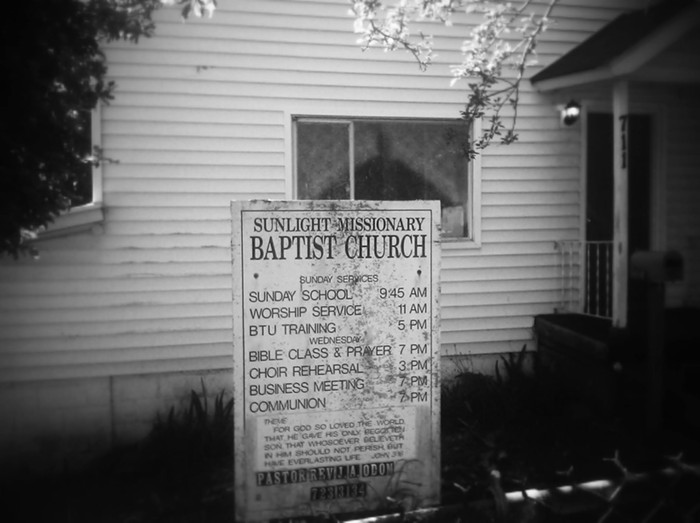The importance of this post cannot be underestimated. It's by Seattle Times staff reporter David Kroman. Its title: "How often do cars crash into buildings in Seattle? Way more than you think." Now, recall the superb Pixar film Monsters, Inc. It's set in a society whose economy runs on the screams of children. The work of the monsters is to go into the rooms of children at night, make them scream, and these screams power their monstrous world.
Read Kroman's article and you will find that much of our own economy, the one in this side of fiction, the real world in Seattle and other cities, is not that different from the one presented in Monsters, Inc., a film that contains more reality than much of what's found in Econ classes. The point: A large part of our economy does not run on screams, but outrage. We live and work and dream in an outrage factory. This is made abundantly clear in "How often do cars crash into buildings in Seattle? Way more than you think."
Dim Sum King was wearing visible yellow and red, but still was hit by a motorist. https://t.co/JQRKuqdkoo via @seattletimes pic.twitter.com/tVXEFuV2uP
— Mike Lindblom (@MikeLindblom) February 13, 2023
The key passage in Kroman's article:
Many [building crashes] end in injury and some, like a 2017 crash near Lake City, are deadly. Damage to buildings and homes can easily run into the tens of thousands of dollars and sideline businesses for months.
Yet, despite plentiful news coverage of so many dramatic crashes, their frequency is poorly tracked.
The question we must ask is, despite the frequency of such crashes, and the real financial threat they pose to the very small businesses that Seattle's right endlessly claims are fleeing the city (along with cops), is this: Why do they generate no outrage? None. Zero. Zip. Kroman: "Last year, a car or truck crashed into a building in Seattle on average every 3½ days—more than 100 times." And yet there is none of this Seattle Is Dying business when it comes to this real and very costly crisis.
Now imagine for a moment if Seattle Times reported that homeless people destroyed, on average, "buildings and homes... every 3½ days." And this destruction often runs "into the tens of thousands and [can] sideline businesses for months." My god. We would never hear the end of it. It would pump millions into political campaigns. Sara Nelson would find herself surrounded by her kind on the Council. But there is nothing of the sort for cars that repeatedly crash into buildings and houses. Its emotional value is close to zero because it has no financial (and as a consequence, political) investments. What this means, in the main, is: our emotions are not our own. They are paid for with the hard cash concentrated at the top of society.
This is the economy of our emotions. If we do not feel this money, we do not feel at all. No one is funding outrage for the crisis Kroman describes. Money is not going there. And, as a consequence, the appropriate feelings (concern, panic, anger) will not be found there. Someone is, however, buying lots and lots of homeless outrage. And, yes, this means the left is in a terrible position. We can only make voters feel outrage if we buy it. This, I think, is the source of the negative energy directed at Kshama Sawant, and why mainstream Dems are politically viable: she refuses to buy the needed emotions for her issues.
Indeed, so impoverished is the car-crash crisis that a good number of them go unreported. Kroman:
Crashes that did not elicit a fire department response or news coverage aren’t included. For example, a Seattle Times reporter witnessed a car reverse into an apartment building near Pike Place Market last summer, but the incident does not show up in any records.
What this shows is the outrage directed at the homeless crisis is manufactured. We are listening to nothing more than the screams of children.
















